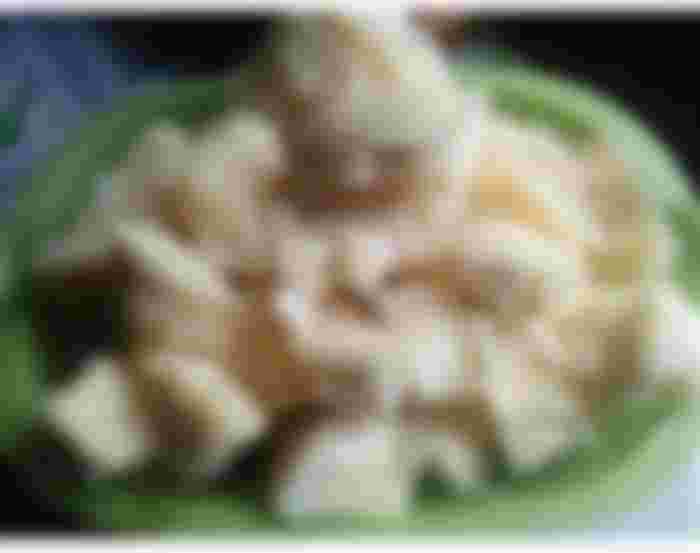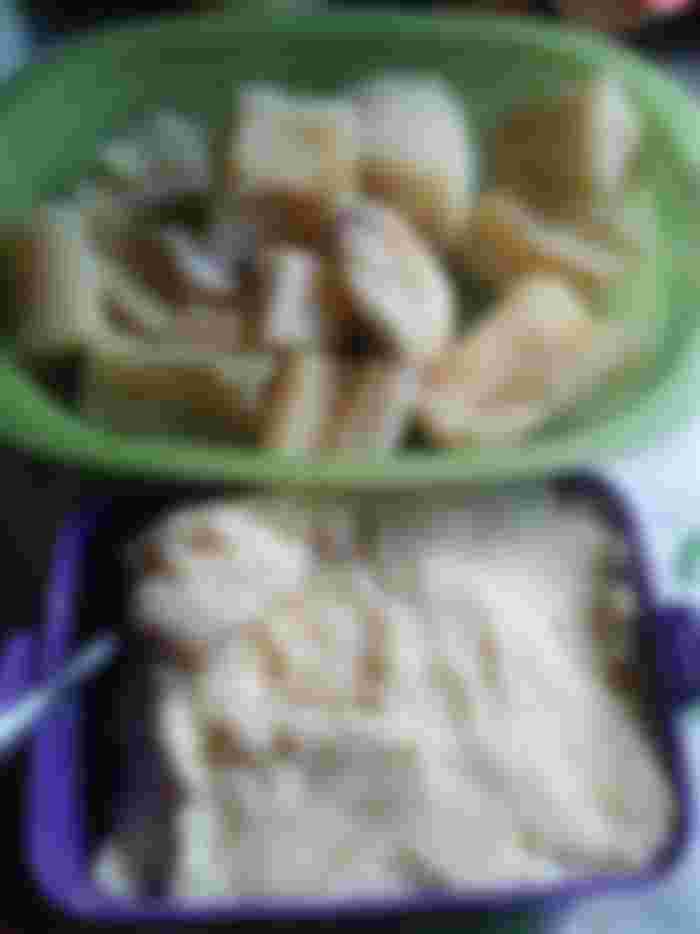Growing up in the province is grace. Unlike urban life, we got to enjoy our childhood life the country sides offer. From swimming in the tumbling cool and fresh waters of the streams, to playing those bone and muscle twitching games of the 80's and 90's, to collecting wild fruits, turnips and berries of the green and gold mountains. Aside from these were the different variety of indigenous foods we grew up with.
We also go with our parent/s during Saturdays in the fields to help whatever our small hands can. From preparing rice paddies for planting, to sowing those delicate young rice seedlings. Harvesting is another season one feels the spirit of being one which brings so much joy to everyone.
After the rice planting season is the preparation for the kaingin to be planted with maize, peanuts, camote, cassava, varieties of beans and legumes, squash and other vegetables. When palay were harvested, then comes the bed making for camote, pechay, beans and other vegetables suited for the weather.We call it valiling. In short, crop rotation is mainly observed in these sides of the country.
But that's not what this article is all about. Let's talk about cassava which we locally call padpadli.

Cassava is commonly planted on kaingins where it is also planted for fence purposes on boundaries in between two kaingin. It has an edible leaves and root tubers covered with bark-like skin. Best part of it was, it can be grown on tropical and sub-tropical countries. It is one among those that can grow on marginal soils or less nutritive areas which makes it a staple food for developing areas.
However, it needs to be cooked properly for it contains a type of sugar molecule called cyanogenic glycosides. These are converted by the body into cyanide when ingested. Eating it raw or undercooked causes cyanide poisoning which leads to complications, even death.
Cassava is prepared in different native recipes. It can be eaten as it is when boiled or dipped in sugar or peanut butter. It is also best paired with coffee for breakfast or snacks. Here in our place we have this beverage which is called "sabeng." It is made from boiled cassava placed in an earthen big jar, then poured with previously cooled boiled water and tightly covered until it is fermented. This beverage is use to cook small fishes caught in the river. Old traditional meals include boiling sabeng then some vegetables are added, salt is added to taste.
When we were younger, my maternal grandma used to boil it and we pound it with sugar on a mortar and pestle until it becomes smooth and sticky. We enjoyed it to the last spoon. Sometimes we asked for more. Our granny also added some thinly sliced cassava when preparing for native delicacies.
My mother prepare it by grating, add some needed condiments and wrapped it in a plastic cellophane -the ones used for wrapping bread then steam it. Later did we learned that it is a hazardous procedure because heated cellophane or any plastic containers which comes in contact with heat produces cancer causing agents. By then, she started preparing it by grating and baking into cassava cake.
When I was studying in the lowlands, I never expected to see and taste a different variety of cassava. Theirs was yellow colored and had a sweeter taste which needs not to be dipped in sugar. While the one we cultivate here was the milky white, starchy and had a nutty taste. Additionally, tnere were two kinds of cassava; bitter cassava and sweet cassava. While the latter has less cyanide content, the bitter one has more.
On Monday this week, my mother-in-law brought over 4 large cassava roots which my hubby washed, sliced and peeled two roots then cooked it. My kids doesn't like it because they were not used to. Because I like them to like it, I patiently sliced it into smaller pieces and placed it in the food processor. Added some condensed milk and butter then processed it. Voila! Like some other foods they did not like until I have to make it into something more palatable, they suddenly helped themselves into it.

These tubers can also be made into flour. Thanks to livelihood programs which help locals in making products out of raw produce like that of banana, sweet potato, cassava, etc. That they add knowledge to us who are not aware about the existence of such or have little to no knowledge on making it into something new.
Cassava, like any other root crops which was being ignored by some contains some important nutrients needed by the body. It is rich in calories, carbohydrates and iron as a good source of energy. Fat, thiamine, riboflavin, niacin, vitamin B6, iron, zinc. It also contains fiber, sugar, protein, folate, vitamin C, calcium, magnesium, phosphorus, potassium and sodium. Because of its high carbohydrate content that it comes third from rice and corn.
With these lots of vitamins and nutrients this tuber offers, people from long ago who consider it as their staple food live to hundreds. And one among them are our forefathers in our village who only depend on what their hands sow, and from other fruits and berries.
With the said nutrients, cassava when well incorporated into healthy menu turned out to have many health benefits. The following are among them:
Weight loss- rich in dietary fiber. It tends to make you feel full for a longer period of time.
Migraine relief- its content of Vitamin B2 and riboflavin is responsible for it
Improves digestive health- again, fiber
Diarrhea treatment- its antioxidant properties helps in reducing symptoms of diarrhea.
Vision improvement
Wound healing - roots, stem, and leaves can be use to treat wounds causing it to heal faster.
Reduce body temperature or fever
cleanses gut worms
Appetite booster- try some boiled cassava roots when you're suffering from emotional or physical reasons that leads to loss of appetite resulting to weakness. The carbs and fiber content helps to regain your appetite.
However, cassava as part of daily diet is not recommended for pregnant women and breastfeeding moms. It might cause some birth defects to the unborn child.
Cassava when consumed regularly by a breast feeding mom might risk the child to imbalance thyroid function.
For people who have allergies to latex, who have low levels of iodine, and have low protein intake it is advisable not to consume cassava in large amounts or avoid it including in your daily diet. Consumption in large amounts or including it in daily diet worsens the conditions.
As for storing raw, unpeeled roots my mother-in-law told me that whatever is left which is not to be cooked immediately is to be soaked in water. Doing so would not harden the roots and to release some of its cyanogenic glycosides. Google also said that it can be stored in the ref for a few days and in the freezer for a month.
z_graeden
(EXC badge where art though)


What the children of the 90's did, the way they spent their childhood seems like a story to today's children, now whose children know nothing but computers, playing games on the internet, they are not growing up as strong as the children of the 90's